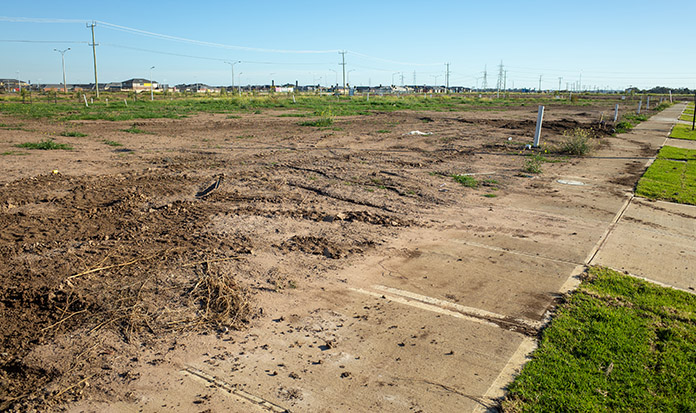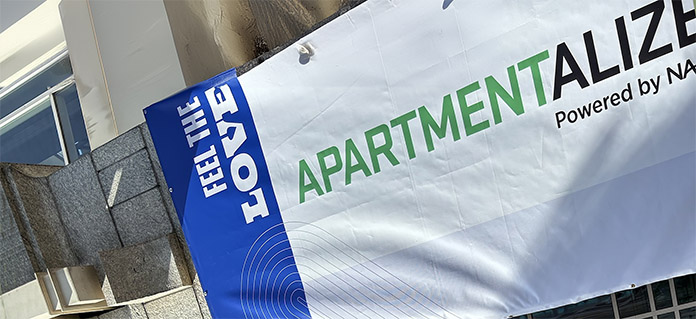Henry Shane will never forget the challenges he faced after Hurricane Katrina ravaged the Gulf Coast last year.
Shane, co-owner of Metairie-based 1st Lake Properties, the largest multifamily owner in Louisiana, had a disaster plan in place before Katrina hit. But his plan wasn’t enough to respond to a mammoth storm and flood that caused $100 million worth of destruction to his properties and substantially damaged 3,500 of his 8,400 units.
“Our plan was based on the experience we’ve had over the 30 years we’ve been in business,” he said. “That experience is that the hurricane comes, it does a certain amount of damage and in one or two days you’re back and working. Now we’ve learned that when you have this devastation like we had, there are many more things to do.”
1st Lake Properties’ projected revenues were more than $75 million, according to company chairman H.M. Favrot. After Katrina knocked thousands of the company’s units offline, revenues fell under $60 million, Favrot said.
The effects of disasters, such as hurricanes, tornadoes, floods, fires and earthquakes, can be staggering to multifamily properties, whether for rent or for sale. According to the Financial Planning Association, 40 percent of all businesses hit by a natural disaster fail to reopen, and 25 percent of those that do reopen close within a year. That’s why complete and early preparation for disasters is essential for the survival of any business operating multifamily properties.
“The economic impact of a disaster is extraordinary,” said David Levin, a Delray Beach, Fla.-based real estate consultant. “You’ve got to anticipate a variety of what-if scenarios.”
Owners of multifamily properties in high risk zones, such as Florida or California, have no excuse for being unprepared for a disaster, Levin said. But even those who think they’re immune to a disaster can be affected as well. “There’s an interrelationship,” he added. “The guy who’s trying to rebuild on the Gulf Coast creates all kinds of construction materials and labor issues in Florida. So even if you’re blessed to be missed by a disaster, the economic impact can still hit you.”
In a world where natural disasters seem to be striking with increasing frequency and the cost of insurance is skyrocketing to nearly unattainable levels, how can you effectively manage the risk of building, owning or investing in multifamily real estate?
Create a disaster response plan well in advance. “The time to figure out what you’re going to do when you have a loss is well before you’ve ever had it,” said Rose Kugler, a Downers Grove, Ill.-based risk management and insurance consultant. To create a plan, identify the risks your properties face, develop responses to those risks and then implement the plan. Sares-Regis Group, which currently owns or manages about 13,000 apartments, has a detailed emergency preparedness manual that includes emergency phone numbers, a site plan for utility shutoffs and information on the chain of command, said Jim Thomas, president of the firm’s multifamily and property management division. Still, even with a plan in place, the company lost 400 units in the 1991 Oakland wildfire. The fire consumed the property inside of 15 minutes.
Train on a continuing basis. Once you have a disaster plan, make sure all employees — not just managers, but on-site staff, maintenance and office personnel as well — are familiar with it. All employees should know where the utility shutoffs are, for example, as well as who is in charge. But one training session isn’t enough; continuing education is key. Sares Regis, for example, holds monthly safety meetings at each property to go over emergency preparedness, Thomas said.
Mitigate the risk of physical damage. Don’t ignore the obvious. If a hurricane is threatening, secure windows and doors. Also consider bringing properties up to current code, which not only helps prevent damage, but may also mitigate insurance costs. Better construction methods help abate risk as well.
EH Building Group, a South Florida developer, incorporates “solid six” construction into some of its multifamily properties. With this technology, cement is poured in a series of cast forms that create a contiguous seal of walls, floors and ceilings. The design resists winds up to 200 miles per hour, as well as fires and termites.
Plan for restoration ahead of time. “When disasters strike, businesses are often left scrambling to secure vital materials and services needed to continue operations,” said Ed Weingartner, president of Dynamic Building Restoration in West Chester, Pa. To ensure availability and avoid price-gouging, make pre-arrangements with a restoration company. Within 24 hours of when the “all clear” is given after a natural disaster, for example, Dynamic Building provides its clients with large-scale drying equipment, infrared cameras and industrial generators. “By being proactive, developers, owners and managers can save time and millions of dollars in the long run,” Weingartner said.
Maintain vital communication between stakeholders. After losing phone service for over two weeks after Katrina, 1st Lake Properties now uses an inland satellite office and a Web site to maintain contact between employees if another disaster strikes. The company also set up two safe houses with generators, at a cost of $400,000, that allow key construction and maintenance staffers to get to disaster sites quickly.
Don’t ignore residents. Make residents and condo owners aware of risks by holding informative meetings. Train residents on using fire extinguishers and changing smoke detector batteries. And if there is a disaster, don’t forget about the impact upon residents. After a 322-unit condo project under development in Atlanta by Lane Co. was burned to the ground by an arsonist last year, the company went all out to make sure that people planning to live there “had a place to go, a face to talk to and a shoulder to cry on,” said Andrew Gardner, the firm’s director of condominium operations.
The fire was so hot that it also damaged a Lane project across the street, displacing residents of 84 units who had recently moved in. Lane helped those residents find housing at its apartment projects and offered them advice — and assistance — in making insurance claims. “There was a lot of communication that had to be coordinated,” Gardner said. “That was part of our risk management plan.”
Protect your data and essential files, including payroll, accounts receivable and accounts payable records. Back up often and store files off-site.
Transfer risk via insurance. Despite its jaw-dropping costs, insurance is still one of the best ways a multifamily firm can manage risk. Consider raising deductibles to control costs. Aon Construction Services Group, an Irvine, Calif.-based insurance brokerage, encourages its developer clients to discuss insurance needs before they embark on new projects. “One of the things that helps from a construction defect perspective is peer review,” said Bill Marutsos, an Aon vice president. “A lot of underwriters require you to do third-party peer review before they’ll insure one of your projects.” Make sure you pursue all discounts, and remember that the burden is now on you to prove to the insurance company that you’re a good risk. “There’s a lot more demand for insurance than there is available supply,” said Kugler.
With proper planning — and a little luck– most multifamily developers, owners and managers can avoid the worst case scenario. “You can’t manage nature,” said consultant Levin. “But you might be able to mitigate some of the risks. Just don’t make the assumption that this will never happen to me.”
Author: Robyn Friedman















